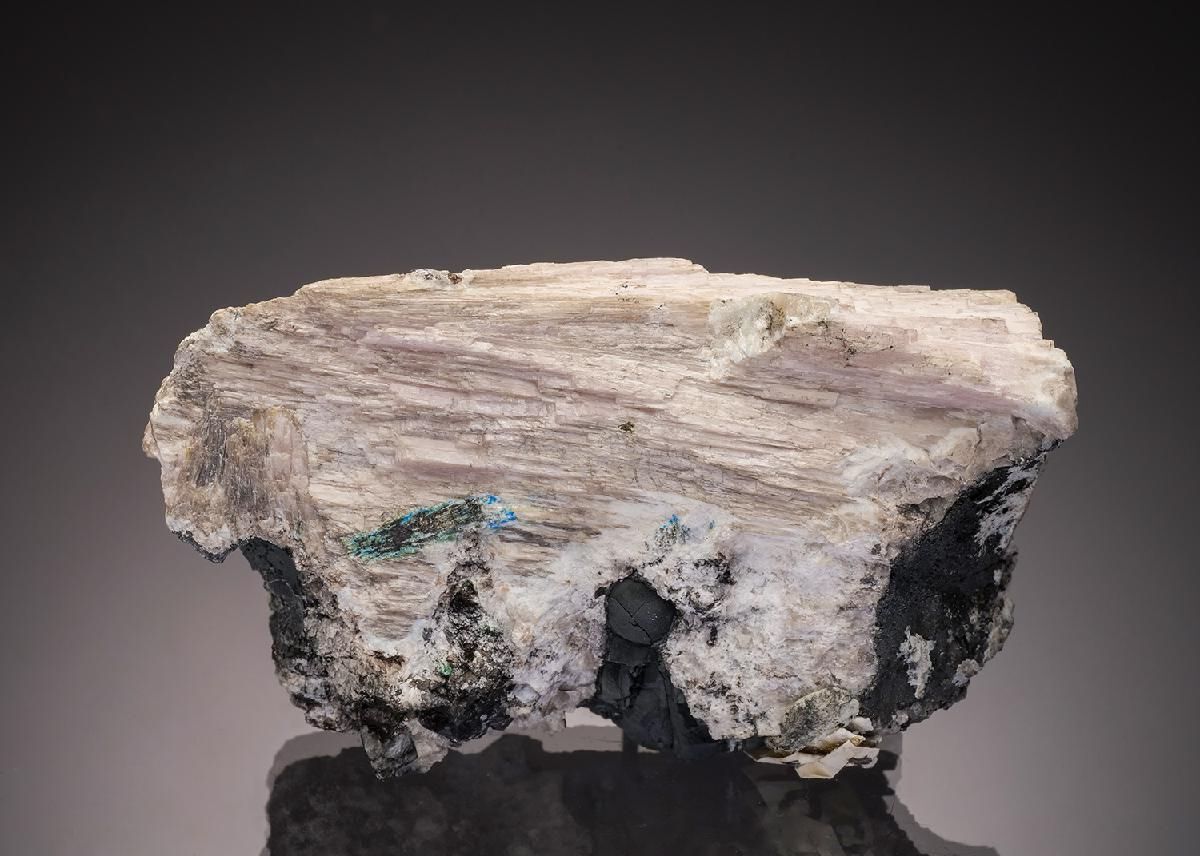
Mendipite is a rare mineral that often intrigues collectors and geologists alike. Found primarily in the Mendip Hills of England, this mineral boasts a unique composition and striking appearance. What makes Mendipite so special? Its chemical formula, Pb3Cl2O2, reveals a fascinating blend of lead, chlorine, and oxygen. This mineral typically forms in oxidized zones of lead deposits, creating stunning white to pale yellow crystals. Why should you care about Mendipite? Beyond its beauty, it offers insights into geological processes and mineral formation. Whether you're a seasoned collector or a curious newbie, learning about Mendipite can add a new layer of appreciation for the natural world. Ready to dive into 30 intriguing facts about this captivating mineral? Let's get started!
Key Takeaways:
- Mendipite is a rare lead mineral found in England, known for its unique properties and historical significance. It's visually distinct with a white to pale yellow color and is often found in old mine workings.
- Due to its rarity, Mendipite is primarily a collector's item and is used in educational settings to teach about mineral properties and lead minerals. It's also a subject of scientific study in mineralogy and geology.
What is Mendipite?
Mendipite is a rare mineral named after the Mendip Hills in England. It's known for its unique properties and fascinating history. Let's dive into some intriguing facts about this mineral.
-
Mendipite is a lead halide mineral. It contains lead, chlorine, and oxygen.
-
The mineral was first discovered in the Mendip Hills of Somerset, England, in 1939.
-
Mendipite typically forms in oxidized zones of lead deposits.
-
It has a white to pale yellow color, making it visually distinct.
-
The mineral has a monoclinic crystal system, which means its crystals are shaped in a specific, less symmetrical form.
-
Mendipite is relatively soft, with a Mohs hardness of 2.5. This means it can be scratched by a fingernail.
Chemical Composition and Structure
Understanding the chemical makeup and structure of Mendipite gives insight into its formation and properties.
-
Its chemical formula is Pb3Cl2O2.
-
Mendipite crystals are often tabular or prismatic, meaning they can be flat or elongated.
-
The mineral is biaxial, which affects how it interacts with light.
-
It has a specific gravity of 7.24, indicating it is quite dense.
-
Mendipite is soluble in nitric acid, which can be used to identify it in the field.
-
The mineral often forms in association with other lead minerals like cerussite and galena.
Historical and Geological Context
The history and geological context of Mendipite provide a backdrop for its discovery and significance.
-
Mendipite was named after the Mendip Hills, a range of limestone hills in Somerset, England.
-
The Mendip Hills are known for their rich mining history, particularly for lead and zinc.
-
Mendipite is often found in old mine workings, where oxidation of lead ores has occurred.
-
The mineral is considered rare, with few significant deposits worldwide.
-
Mendipite has been found in other locations, including Australia and the United States.
-
The mineral's rarity makes it a collector's item for mineral enthusiasts.
Physical and Optical Properties
Mendipite's physical and optical properties make it unique among minerals.
-
It has a vitreous to pearly luster, giving it a shiny appearance.
-
The mineral is translucent to opaque, meaning light can pass through it to varying degrees.
-
Mendipite exhibits perfect cleavage in one direction, meaning it breaks smoothly along a specific plane.
-
It has a refractive index of 2.19 to 2.24, which measures how much it bends light.
-
Under polarized light, Mendipite can show interference colors, which are colors produced by the interaction of light waves.
Uses and Applications
While not widely used industrially, Mendipite has some interesting applications and uses.
-
Due to its rarity, Mendipite is primarily a collector's mineral.
-
It is sometimes used in educational settings to teach about mineral properties and lead minerals.
-
The mineral's unique properties make it a subject of scientific study, particularly in mineralogy and geology.
-
Mendipite can be used to demonstrate the effects of oxidation in lead deposits.
Interesting Tidbits
Here are some more fascinating facts about Mendipite that highlight its uniqueness.
-
Mendipite can sometimes be found in fossilized wood, where lead has replaced the organic material.
-
The mineral can form pseudomorphs, where it takes the shape of another mineral while retaining its own composition.
-
Mendipite's discovery in the Mendip Hills has contributed to the area's geological significance and interest.
Final Thoughts on Mendipite
Mendipite, a rare mineral, holds a unique place in the world of geology. Its striking appearance and fascinating properties make it a subject of interest for collectors and scientists alike. Found primarily in the Mendip Hills of England, this mineral's rarity adds to its allure. With its distinctive white to pale yellow color and high lead content, mendipite stands out among other minerals. Its formation process, involving the alteration of galena and cerussite, showcases the dynamic nature of geological processes. Whether you're a seasoned mineral enthusiast or just starting to explore the world of geology, mendipite offers a glimpse into the Earth's complex and beautiful mineral kingdom. So next time you come across this intriguing mineral, you'll know a bit more about its story and significance. Happy rock hunting!
Frequently Asked Questions
Was this page helpful?
Our commitment to delivering trustworthy and engaging content is at the heart of what we do. Each fact on our site is contributed by real users like you, bringing a wealth of diverse insights and information. To ensure the highest standards of accuracy and reliability, our dedicated editors meticulously review each submission. This process guarantees that the facts we share are not only fascinating but also credible. Trust in our commitment to quality and authenticity as you explore and learn with us.
